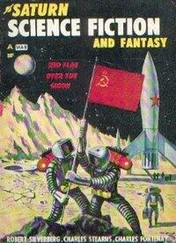John M. Galione, a private with the 145th Regiment, had made the grisly discovery by literally following his nose. “Hey Sarge, what do you think that odor could be?” he asked early on the morning of April 5. The smell was the stench of decaying corpses from a passing prisoner transport train. For four days, Galione followed the rail tracks, convinced they led to a concentration camp. He walked more than one hundred miles, mostly at night and by himself. “Something overpowering came over me,” he recalled fifty years later. “I don’t know what it was. My legs just kept walking. It was as if someone was pushing me from behind.”
Finally, early on April 10, after hiking again all night, he came across an abandoned railcar shortly before dawn. It was filled with dead bodies. Behind it, some sort of a camp emerged in the morning mist. As the sun rose, piles of dead bodies grotesquely materialized. “They were gray in color, and they looked like skeletons wrapped in skin. Some of them were so thin you could see their backbones through their stomachs.”
But amid the horror, something else caught Galione’s eye. “From where I was standing, I could see a hidden tunnel coming out of the side of the mountain. That’s how I knew I had found something big the Nazis were trying to keep secret.”
What Galione had found was Mittelwerk, the giant subterranean V-2 factory, and Dora, its attendant concentration camp.
When word of the find reached Toftoy at the Plaza Athénée Hotel a few days later, he immediately grabbed a map. Mittelwerk was near Nordhausen, in Thuringia. Oh my God, he thought. That region of Germany was slated to become part of the Soviet occupation zone. His closest inspection team was in Fulda, eighty miles away. It would take weeks just to inventory the more than one million square feet of caverns that connected Mittelwerk’s two-mile-long assembly-line tunnels. Subassemblies with tens of thousands of often highly complex component parts for fuel pumps, guidance systems, electronic relays, and everything else that made a rocket fly would need to be carefully examined and cherry-picked. The few intact rockets that had been completed just before the Nazi evacuation would have to be partly dismantled and readied for transport. Specialized troops with the necessary mechanical skills to handle such fragile cargo would need to be found. The only unit that remotely fit the bill was the 144th Motor Vehicle Assembly Company. And it was currently in Cherbourg, France, 770 miles away. And, as if all that wasn’t challenging enough, German engineers that could put all this stuff back together in working order would need to be located and their cooperation enlisted. Months could pass for an operation of this scale to be mounted.
Don’t touch anything, Toftoy ordered. I’m on my way.
• • •
When Chertok and the Russians arrived at Mittelwerk, on July 14, 1945, the place had been virtually picked clean. The Americans had hauled away one hundred intact rockets and had filled sixteen Liberty Ships with 360 metric tons of component parts for transfer to the White Sands Proving Ground in New Mexico. They had made off with an entire liquid oxygen plant, all sorts of fueling equipment, static test-firing rigs, and a dozen mobile launchers. Most of Mittelwerk’s precision tools and sensitive bench instrumentation panels were gone, as were the German engineers who knew how to operate them. Even the giant overhead tunnel lights that illuminated the underground production lines had apparently been tinkered with, so that Chertok and his team were left to grope dangerously in the dark.
“The problem is this,” another Soviet rocket scientist, Colonel Grigori A. Tokady, glumly reported to Moscow. “We have no leading V-2 experts in our zone; we have no complete projects or materials of the V-2; we have captured no fully operational V-2s which could be test launched right away. We [only] have lots of bits and pieces.”
At least the Americans had buried the dead at Dora—nearly five hundred Russians, Poles, and Hungarian Jews—and nurtured the skeletal survivors back to a semblance of life. Still, Chertok could barely bring himself to visit the concentration camp, where mounds of human ash still littered the crematorium, and the horrors of working at Mittelwerk still haunted the hollow features of its freed slave laborers. The majority of the factory’s twenty thousand victims had been Russian POWs—often hanged a dozen at a time for minor infractions from the overhead crane that ran the length of Tunnel B. A French prisoner, Yves Beon, described being forced to file past the corpses dangling above the V-2 assembly line: “Most of their bodies have lost both trousers and shoes, and puddles of urine cover the floor. Since the ropes are long, the bodies swing gently about five feet above the floor, and you have to push them aside as you advance…. You receive bumps from knees and tibia soaked in urine, and the corpses, pushed against each other, begin to spin around…. Here and there under the rolling bridge, truncheons in hand, the S.S. watch the changing of the shifts. They are laughing: it is a big joke to these bastards.”
For each of the 5,789 V-2s produced at Mittelwerk, which had been built by the same engineer who designed Auschwitz, nearly four prisoners had died. But those who survived now came forth to offer their intimate knowledge of the factory’s intricate cavern network. One former prisoner told Chertok, “I know places where the SS hid the most secret V-2 equipment that the Americans didn’t find.” As Chertok later recalled, “He led us to a distant wooden barracks hut, where in a dark corner, after throwing aside a pile of rags, he jubilantly revealed a large spherical object wrapped in blankets. I was stupefied. It was a [next generation] gyro-stabilized platform, which still hadn’t become a standard V-2 instrument.”
The find brightened morale among the despondent Soviet scientists. Perhaps the Americans hadn’t taken everything of value after all. Toftoy had left enough exterior rocket parts—tail fins, middle-section casings, and nose cones—to piece together fifteen to twenty whole V-2 bodies. Without the innards, though, the shells were largely useless. Yet the gyroscope gave Chertok hope: if an advanced version of the V-2 guidance system could be so easily located, what other buried treasures might the Americans have missed?
Over the next eighteen months, Chertok and an increasingly crowded field of German and Soviet experts began fitting together the missing pieces of the V-2 puzzle. In nearby Bleichrode, at the bottom of a dead-end drift in a potassium mine, they found more guidance system components: Viktoria-Honnef range-control and lateral radio correction sets. In a forester’s cabin, in a hunting reserve just over the demarcation line of the American sector, two sets of relay boxes and firing control panels were unearthed. One of the biggest windfalls was dug out of a sand quarry in Lehesten: fifty brand-new combustion chambers and crates with enough fuel pumps, injectors, and engine parts to fill fifty-eight railroad cars.
When the Russians first fire-tested one of those engines on September 7, 1945, the results stretched the limits of Soviet scientific imagination. The V-2 generated twenty-seven tons of thrust. The biggest Soviet rockets, by comparison, could not even manage a ton of lift. The difference amounted to a quantum technological leap. Every detail of German engine design seemed to reveal a minor engineering miracle. The Germans used alcohol as propellant, instead of kerosene mixed with liquid oxygen. The alcohol ingeniously did double-duty as a coolant for the combustion chamber to prevent meltdowns, snaking around its outer walls in coils, like a refrigeration unit. At the bottom end of the chamber the exhaust nozzles had been counterintuitively shortened and flared, creating a larger opening for the hot jet gases to exit. Such a configuration had long been rejected by Soviet designers on the theoretical principle that a larger outlet would dissipate the intensity of the escaping gases and thus reduce power. In fact, the simple and yet radical alteration increased output by 20 percent. “Pure genius,” whistled Soviet propulsion specialists in evident admiration.
Читать дальше












